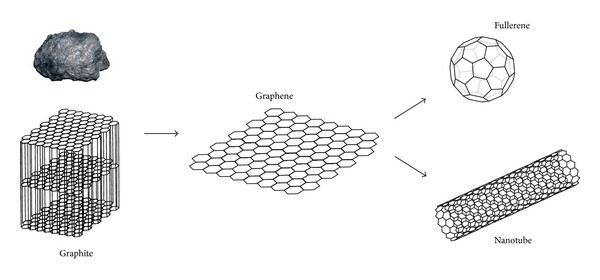Description

Disclaimer: Copyright infringement not intended.
Context
- The Ministry of Electronics & Information Technology (MeitY) launched the 'Graphene-Aurora Program' at a ceremony held in Maker Village Kochi, Kerala.
- This initiative aims to harness the potential of graphene, a remarkable material with diverse applications, by fostering innovation, research, and commercialization.
Details
Program Implementation and Funding
- Collaborative Effort: The program is a collaborative effort between Digital University Kerala, the Government of India's Ministry of Electronics & Information Technology (MeitY), the Government of Kerala, and industry partners.
- Budget Outlay: The program boasts a total budget outlay of Rs 94.85 Crore, with financial support from MeitY, the Government of Kerala, and industry partners. Carborundum Pvt Limited is one of the key industry partners.

Establishing 'India Graphene Engineering and Innovation Centre'
- India Graphene Engineering and Innovation Centre (I-GEIC): A section 8 company (not for profit), I-GEIC, will be established to bridge the gap between research and development and commercialization. It will operate from the Digital Science Park in Trivandrum, Kerala.
- Facilitating Commercialization: I-GEIC aims to provide a comprehensive platform to startups and industries, enabling the smooth transition of graphene innovations from the laboratory to the market.
Nurturing Graphene Technology Ecosystem
- Graphene Innovation Ecosystem: The Graphene-Aurora Program intends to nurture a robust graphene technology and innovation ecosystem. This ecosystem will guide, develop, implement, and support small and medium enterprises (SMEs) and startups in commercializing graphene technologies.
- Global Market Position: The program's focus on creating a commercialization ecosystem for graphene positions India to excel in the emerging global market for new materials.
About Graphene
- Graphene, a single layer of carbon atoms arranged in a hexagonal lattice, has emerged as one of the most extraordinary materials in modern science.
- With remarkable properties that transcend traditional materials, graphene has the potential to revolutionize diverse fields ranging from electronics to materials science.
Structure and Properties
- Atomic Structure: Graphene consists of a single layer of carbon atoms bonded together in a honeycomb lattice, forming a two-dimensional structure.
- Exceptional Strength: Despite being just one atom thick, graphene is incredibly strong and resilient, with a tensile strength over 100 times that of steel.
- Superior Conductivity: Graphene exhibits exceptional electrical conductivity, allowing electrons to move at extremely high speeds.
- Transparency: Graphene is optically transparent, allowing over 97% of visible light to pass through it.
Discovery and Nobel Prize
- Isolation: Graphene was first isolated in 2004 by Andre Geim and Konstantin Novoselov using a simple method involving sticky tape and pencil graphite.
- Nobel Recognition: In 2010, Geim and Novoselov were awarded the Nobel Prize in Physics for their groundbreaking work on graphene.
Applications and Impact
- Electronics: Graphene's high electrical conductivity and remarkable electron mobility make it a promising candidate for ultrafast transistors and electronic devices.
- Flexible Electronics: Graphene's flexibility and transparency have led to the development of flexible, foldable, and wearable electronic devices.
- Energy Storage: Graphene-based materials show potential for high-capacity batteries, supercapacitors, and energy-efficient solar cells.
- Materials Science: Graphene's strength, lightness, and impermeability have implications for creating strong yet lightweight materials for industries such as aerospace.
- Biomedical Applications: Graphene-based materials have shown promise in drug delivery, bioimaging, and biosensors.
Challenges and Limitations
- Mass Production: Current methods of producing high-quality graphene are expensive and limited in scale.
- Band Gap: Graphene's lack of a band gap limits its application in semiconductor devices.
- Toxicity Concerns: The potential toxicity of graphene nanoparticles in certain biological environments is still being studied.
Research and Innovations
- Graphene Derivatives: Researchers are exploring graphene oxide and other derivatives to overcome some of the limitations of pure graphene.
- Functionalization: Functionalizing graphene with different atoms and molecules can modify its properties for specific applications.
Future Prospects
- Electronics Evolution: Graphene-based transistors and components could drive the next generation of high-speed, energy-efficient electronics.
- Energy Revolution: Graphene's applications in energy storage and conversion could reshape the landscape of renewable energy technologies.

Conclusion
The launch of the Graphene-Aurora Program marks a significant step toward harnessing the potential of graphene in various industries. By bridging the gap between research and commercialization and nurturing a robust ecosystem for graphene innovation, India aims to position itself at the forefront of global advancements in materials science and technology.
|
PRACTICE QUESTION
Q. Discuss the significance of graphene as a revolutionary two-dimensional material in modern science and its potential applications in various fields. How might graphene's unique properties shape the trajectory of technological advancements in the coming years? (250 Words)
|
https://pib.gov.in/PressReleaseIframePage.aspx?PRID=1948661
Array
(
[0] => daily-current-affairs/graphene-aurora-program
[1] => daily-current-affairs
[2] => graphene-aurora-program
)











